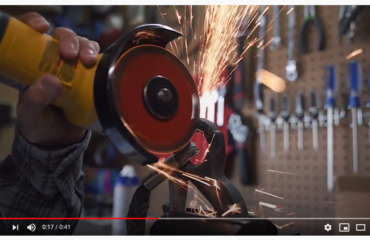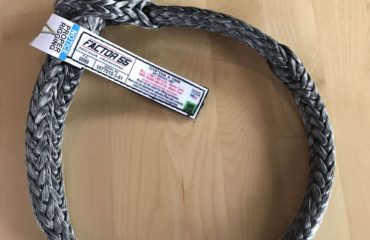UV Degradation of Synthetic Winch Rope
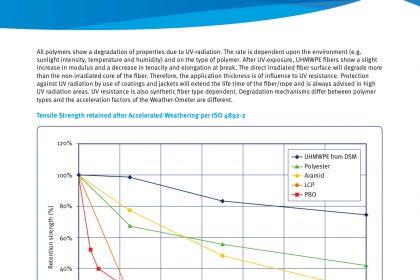
You asked for it and we listened. Many of you wanted more information on the UV degradation of synthetic winch rope. For off-roaders, UV damage to winch ropes is secondary to the more damaging abrasion and impacts we subject our lines to. But with regard to UV damage, the web is full of anecdotal information about this subject, but what are the real facts? Many will claim that winch ropes are coated with UV inhibitors that prevent ropes from getting UV damaged, others say that all polymers are subject to some level of UV damage. Since we don’t have the facilities to conduct an accelerated UV exposure test ourselves, we turned to our friends in the cordage industry as well as scoured the web for any real test data. Here is what we have discovered. You can extrapolate the data as you wish. 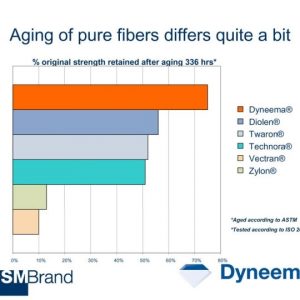
First of all, a majority of the winch rope manufacturers do not manufacture the individual UHMWPE fibers that ropes are comprised of. These rope companies purchase spools of the fibers/yarns from companies like DSM which owns the Dyneema trademark. The real fiber knowledge resides with these fiber companies. In the images below we have included UV test results direct from the fiber source – DSM. We have also included data from the sailing (coated and uncoated fiber) and the climbing industry.
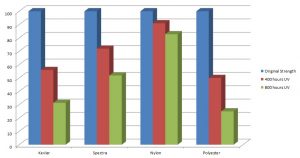
As the exposed outer layer of your rope sustains UV damage, the damaged fibers become opaque which attenuates further damage to the inner rope fibers. The problem is that the UV damaged outer rope layer is weaker and abrades and rubs off easier when used, exposing fresh undamaged fibers beneath. This is not as much a problem with a static application like standing rigging in sailing. However, this can be a problem in a dynamic application like off-road winching where we are repeatedly rubbing and abrading the dirty gritty winch lines across our fairleads.
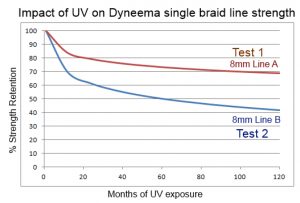
So how do we tell how much strength our winch ropes have lost due to UV damage? You can’t. So what’s the take away then? All fiber and rope companies agree that prolonged UV exposure will damage UHMWPE fibers to some extent. In some cases up to a 20% strength reduction can occur in under a year. Take a look at the UV data charts and decide for yourself. The simple fix is to cover your winch line from the sun. Winch covers work well to cover the spool, and because silicone is inorganic, an opaque RTV silicone can be used to cover smaller areas of winch line as well. Common Cordura abrasion guards can also protect the last portion of your line from UV damage, but don’t rely on these guards for winch line protection when rock crawling.
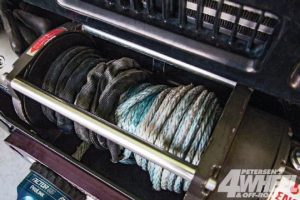
#factor55 #closedsystemwinching
#shadebrigade
#precisionengineering #professionalrecovery #itsyourwinchonlysafer#madeinusa #madeintheusa
#buyamerican #winch #winchsafer#winchsafety #vehiclerecovery
#trailridesmatter #racerecovery #innovationnotimitation
WARN | CRAWL Magazine | SpiderWebShade | Carolina Metal Masters |TNT Customs | sPOD | Rock Krawler Suspension | BFGoodrich Tires |Raceline Wheels | Radflo Shocks | Savvy Off Road | Synergy Manufacturing| Off-Road Solutions | 4WD Toyota Owner Magazine | Overland Journal |Expedition Portal | Barlow Adventures | I4WDTA – The International 4-Wheel Drive Trainers Association LLC | Ultra4 Racing | ULTRA4 EUROPE | King of The Hammers | COMEUP | Mile Marker Winch | Superwinch | 4×4 Magazine| XTREME4x4MAGAZINE | Jp Magazine | Extreme 4×4 Nation | Tread Magazine | Jeepfreeks | Modern Jeeper | Poly Performance | Safe-Xtract |Bill Burke’s 4-Wheeling America – since 1986 | Overland Experts (OEX) |Master-Pull Recovery Gear | Overland Expo | Scully Offroad | Treaty Oak Offroad | 7P International | JM Rigging Supply | Custom Splice | Southeast Overland | 36 Hours of Uwharrie | Northeast Offroad Adventures Inc. | Four Wheeler Magazine | Bigfoot Winch Ropes | UTV Guide | UTV Sports Magazine


